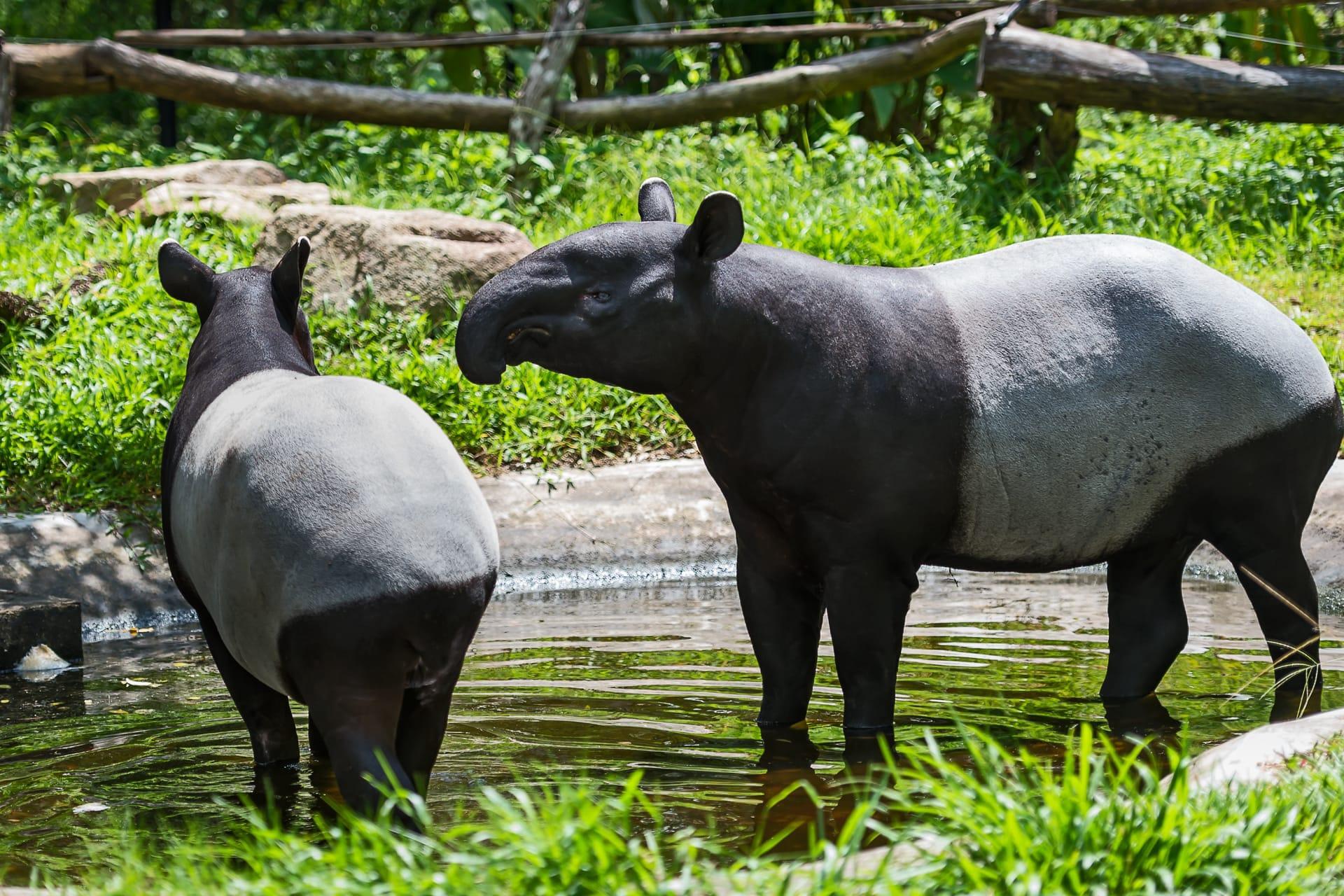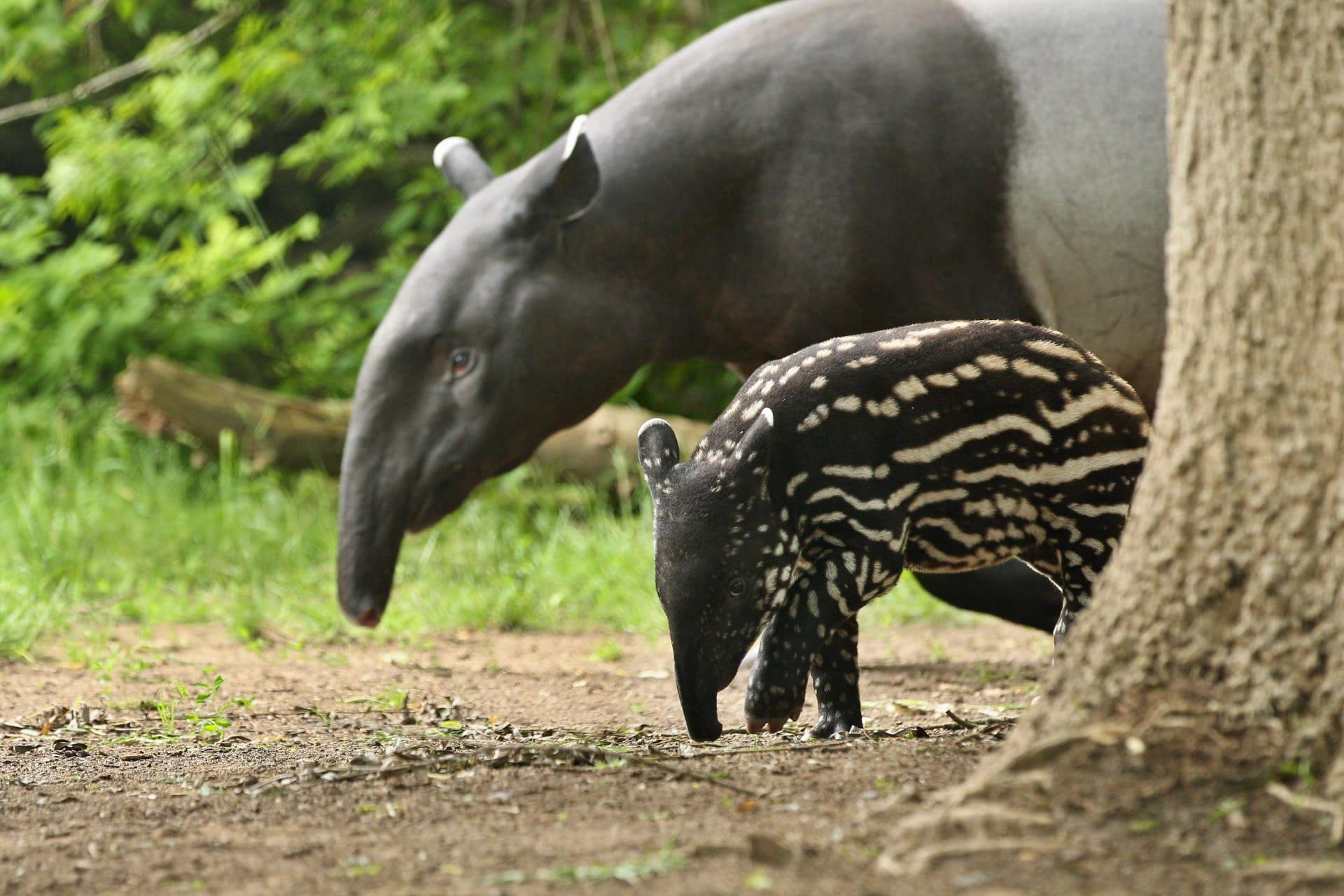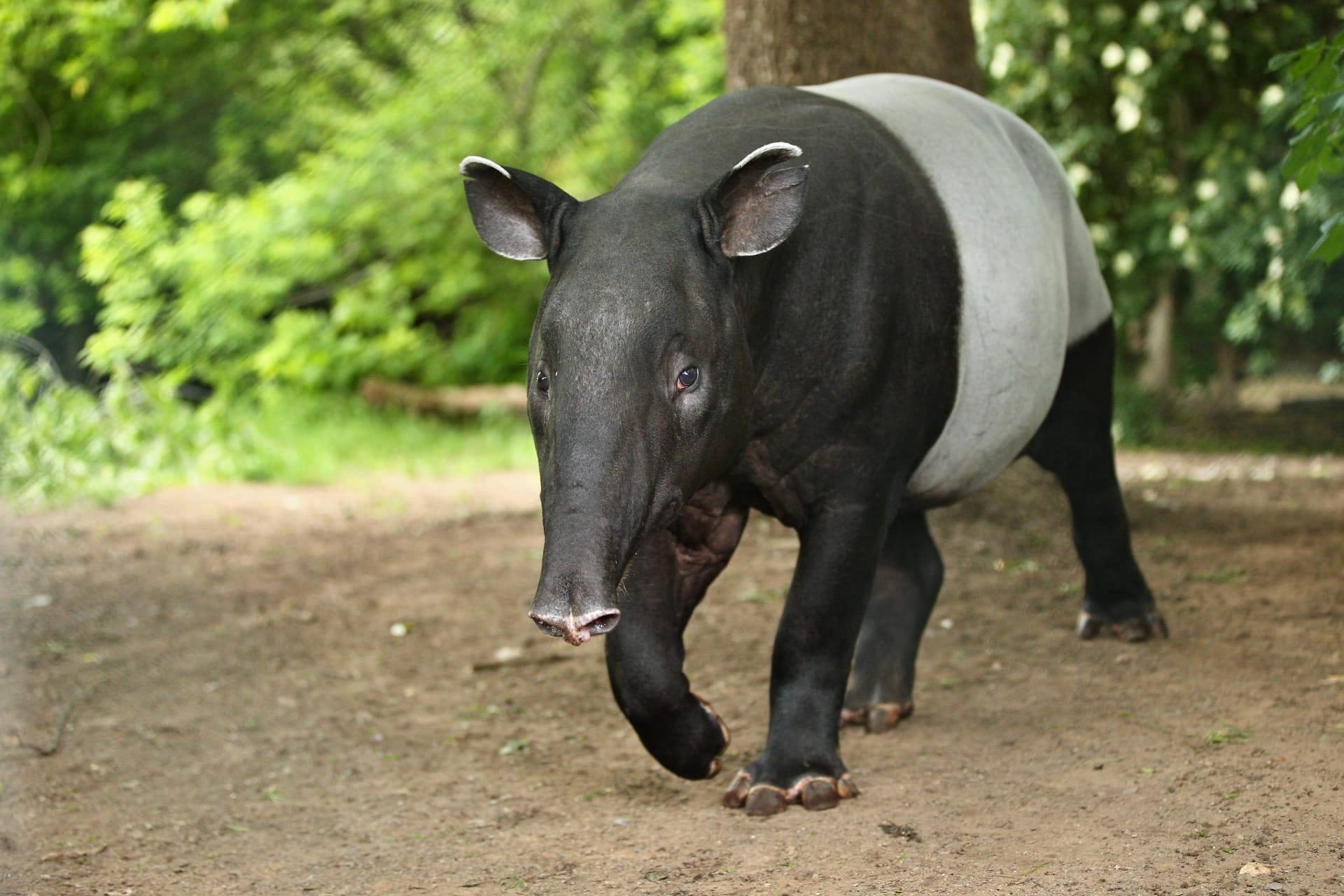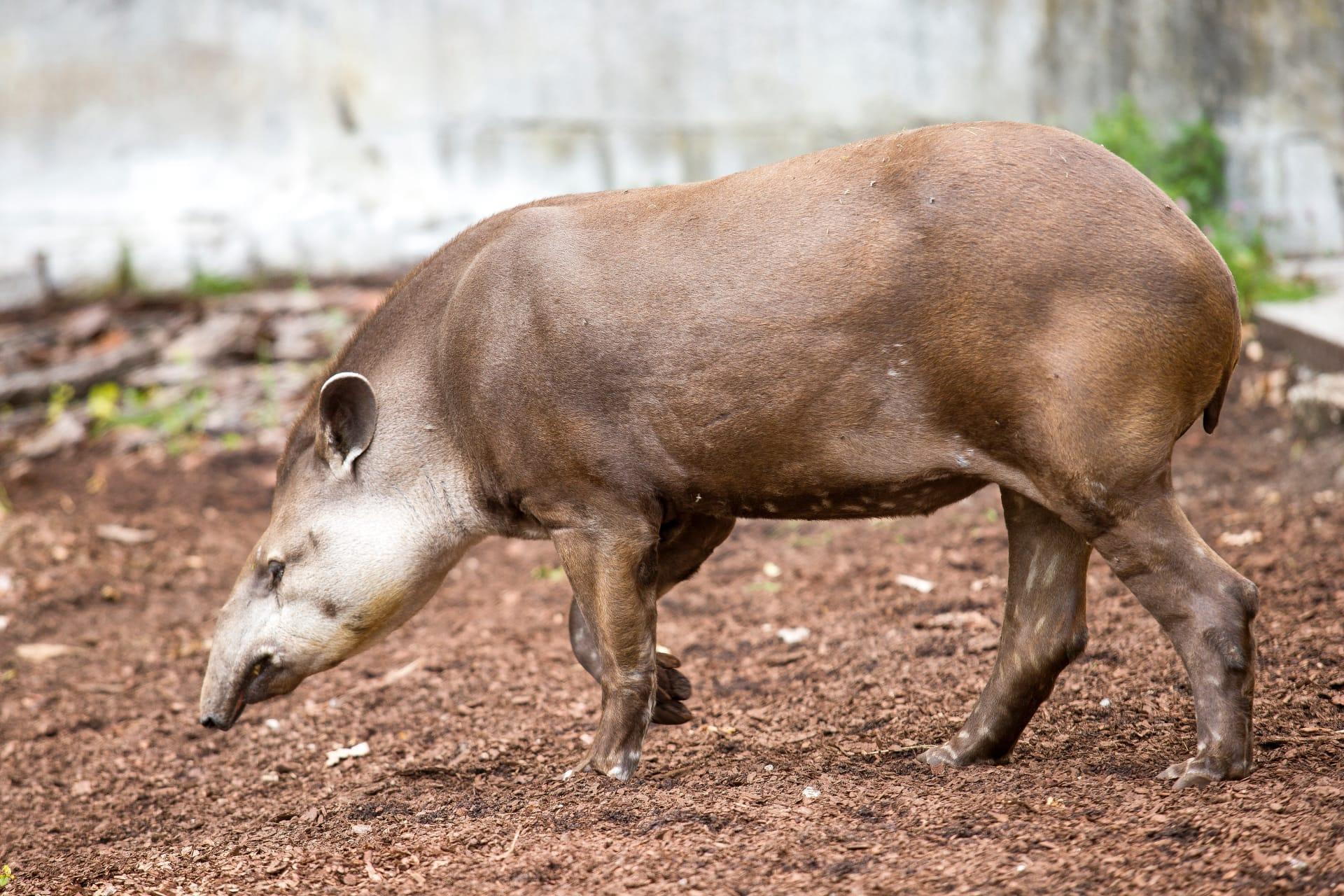Tapir Characteristics
- Home /
- Mini Encyclopedia /
- Animal /
- Tapir Characteristics
1
Tapirs, particularly the Malayan Tapir, are fascinating creatures with distinctive physical characteristics. A full-grown Malayan Tapir can weigh between 550 to 700 kilograms and measure up to 2.5 meters in length. Their lifespan is impressive, often living up to 30 years in the wild, and sometimes even longer in captivity. One of their most striking features is their coat pattern. While adult Malayan Tapirs have a predominantly black coloration with a white or gray 'saddle' that extends from the shoulders to the rear, juveniles have a different pattern. Young tapirs exhibit a series of white spots and stripes on a brownish-black background, which serves as an effective camouflage in the dappled light of their natural forest habitat.
One of the Malayan Tapir's most remarkable organs is its long, flexible snout, which functions almost like an extra limb. This prehensile snout is an extension of the upper lip and nose, and it's incredibly adept at grabbing leaves and fruit, which comprise the bulk of the tapir's diet. This snout is also useful for sensing the environment, as tapirs often use it to explore their surroundings, especially at night. Their excellent sense of smell, aided by this unique organ, helps them locate food and be aware of predators or other dangers in their dense forest habitats.

2
Question: Why do Malayan Tapirs have such distinctive coat patterns?
Answer: The Malayan Tapir's unique coat pattern serves a critical purpose in their natural habitat. For adults, the contrasting black and white coloring might seem conspicuous, but it's actually an effective form of camouflage, especially in moonlit conditions. This disruptive coloration helps to break up the outline of the tapir in the forests, making it harder for predators to spot them. For juveniles, the spots and stripes blend with the mottled sunlight of the forest floor, providing camouflage that helps protect them from predators during their vulnerable early months. This evolutionary adaptation is a brilliant example of how nature shapes an animal's physical traits for survival.

3
Tapirs, despite their bulky appearance, are surprisingly agile and swift when it comes to movement. They are excellent swimmers and often take to water to cool down, hydrate, or escape predators. In the water, they can move with ease and can even use their snout like a snorkel. On land, they can run quickly for short distances, navigating through dense forests with agility. This quick movement is essential for escaping predators and moving through their complex habitats.
As herbivores, Malayan Tapirs have a diet that mainly consists of leaves, twigs, branches, and fruits. They are primarily nocturnal foragers, using their sensitive snout to detect food in the dark. Their strong jaws and teeth are adapted to handle tough vegetation, and they play a crucial role in their ecosystems as seed dispersers. The fruits they consume pass through their digestive system, and the seeds are then deposited in different locations, aiding in forest regeneration and the spread of various plant species.

4
Malayan Tapirs are primarily found in the tropical rainforests of Southeast Asia, including Malaysia, Thailand, and Indonesia. These environments provide them with the dense vegetation cover they need for camouflage and protection. They prefer areas near water sources like rivers, lakes, or swamps, as water plays a significant role in their lifestyle for cooling off and escaping from predators. The destruction of these habitats due to deforestation and urban development poses a significant threat to their survival.
Regarding reproduction, Malayan Tapirs have a gestation period of approximately 13 months, one of the longest among land mammals. Typically, a female tapir gives birth to a single calf, which stays with its mother for up to two years. During this time, the mother teaches the calf survival skills, such as foraging and swimming. The maternal bond is strong, and this extended care ensures that the young tapir is well-equipped to survive independently in the wild.

5
Book: "The Secret Life of Tapirs" by Amanda Bennett is an insightful exploration into the world of tapirs. Published in the United States in the early 2000s, Bennett's book delves into the behaviors, habitats, and conservation efforts surrounding these unique creatures. She combines scientific research with engaging anecdotes, offering readers an intimate look at the lives of tapirs in the wild.
Book: "Jungle Shadows: The Malayan Tapir" by David Attenborough, released in the United Kingdom in the late 1990s, is another remarkable read. This book captures the essence of the Malayan Tapir, detailing its ecological significance and the challenges it faces. Attenborough's eloquent narrative and vivid descriptions bring the mysterious world of the tapir to life, emphasizing the urgent need for conservation efforts to protect these fascinating animals and their habitats.